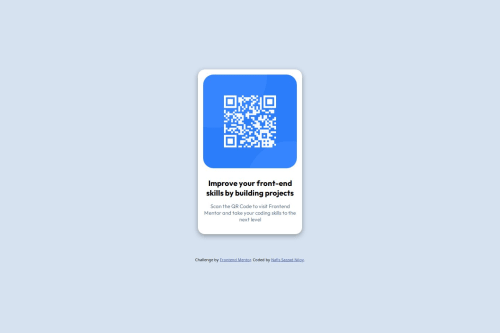Submitted 11 months agoA solution to the QR code component challenge
A Simple QR Code Project using only HTML and CSS
@methane-js

Solution retrospective
What are you most proud of, and what would you do differently next time?
I am proud because I have successfully completed a project of a renowned website. I want to learn further about frontend development from this website.
What challenges did you encounter, and how did you overcome them?I am basically very weak in responsive web designs. So I encountered a challenge for making this project responsive. But I overcame them with very simple codes.
What specific areas of your project would you like help with?I would like to know about placing an object to the center of a website. I think there is a better way to place the QR code in the center.
If you know, please tell me.
Code
Loading...
Please log in to post a comment
Log in with GitHubCommunity feedback
No feedback yet. Be the first to give feedback on Nafis Sazzad Niloy's solution.
Join our Discord community
Join thousands of Frontend Mentor community members taking the challenges, sharing resources, helping each other, and chatting about all things front-end!
Join our Discord